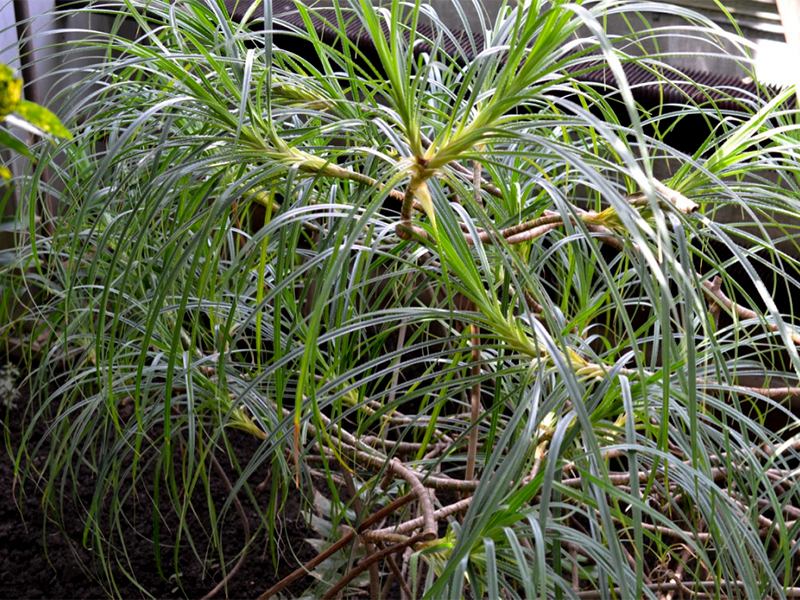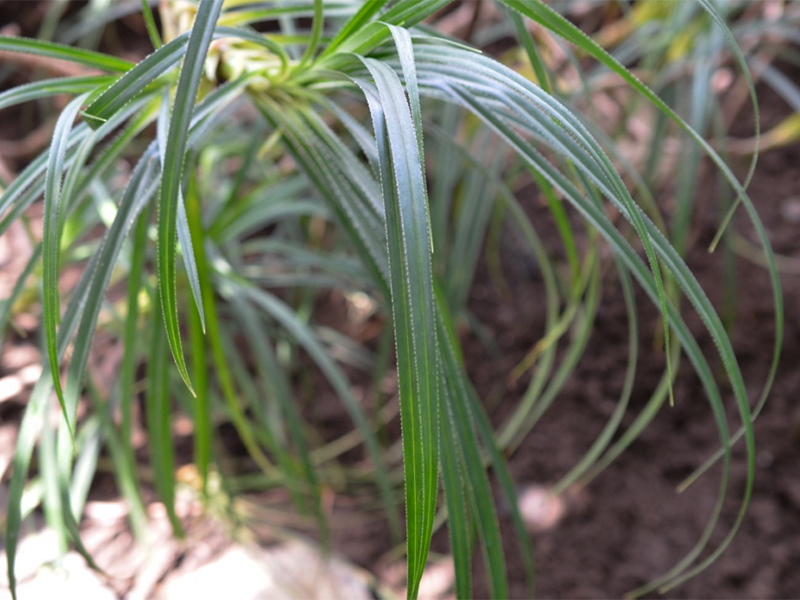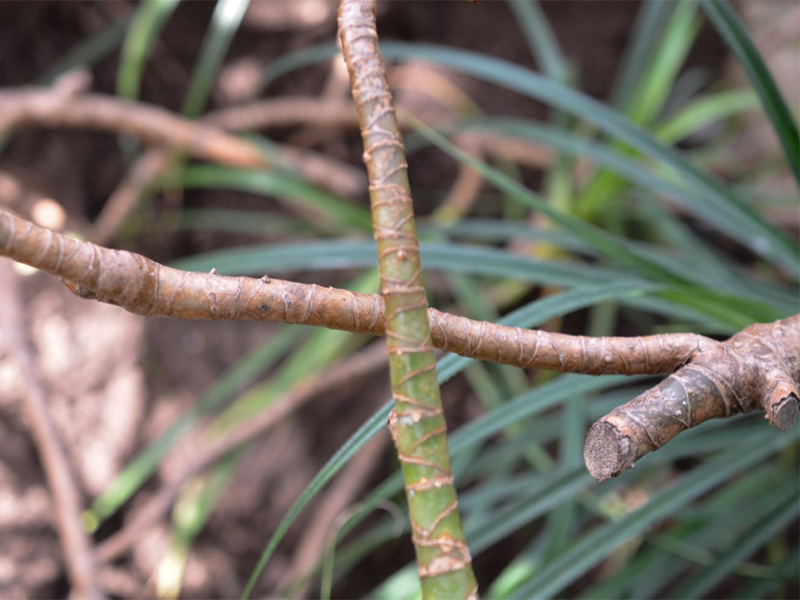
Tropicals > Pandanus > Pandanus candelabrum > Pandanus candelabrum
Pandanus candelabrum
Chandelier Tree
Origin: West Tropical Africa.
| Family |
| Pandanaceae |
| Genus |
| Pandanus |
| Species |
| candelabrum |
| Category |
| Tropicals |
| Type |
| Tree (evergreen), Shrub (evergreen) |
| USDA Hardiness Zone |
| 9 - 10 |
| Canadian Hardiness Zone |
| Requires cold season protection under glass. |
| RHS Hardiness Zone |
| H2 - H4 |
| Temperature (°C) |
| -10 - 5 |
| Temperature (°F) |
| 14 - 41 |
| Height |
| Up to 9 m |
Photographs
Description and Growing Information
Flowering Period
| General Description |
| Spiny, evergreen shrub or tree. |
| Cultivation |
| Grows best in full to partial sun in rich, well-drained soil. Branches do not have dormant buds and so will not sprout back if cut all the way back into the old wood when pruning. |
| Growth |
| Medium |
| Habitat |
| Gallery forests, usually along the sides of rivers and sometimes growing in the water. The trees can form almost impenetrable thickets at the edge of the more sluggishly flowing rivers which often impede navigation and have to be cut away. |
| Bark/Stem Description |
| Conspicuous stilt roots and a thorny bole that can be up to 25 cm in diameter. |
| Leaf Description |
| Long and stilletto-shaped. |
| Flower Description |
| A dioecious species, both male and female flowers are on separate plants. |
| Fruit Description |
| The cylindrical fruit is a syncarp made up of a number of individual drupes. Individual drupes are hard, woody wedges - each containing a few, slender seeds. Each wedge has a fleshy base imbued with a sweet-smelling, orange pulp that in many species has a delicious flavour. |
| Colour Description |
| Leaves are medium to dark green, lightening in colour near the base of the leaf and the tip. Bark ranges from green to brown. |
| Texture Description |
| Bark is smooth with raised ridges. |
| Notable Specimens |
| Centennial Conservatory, Thunder Bay, Ontario, Canada. |
| Propagation |
| By seed. |
| Ethnobotanical Uses (Disclaimer) |
| The leaves are commonly gathered from the wild and used to make baskets, mats etc. The plant is possibly also used as a local source of food. It is sometimes cultivated locally in damp places near villages if it does not growl wild in the area. The pulp of the fruit needs to be cooked in order to destroy a deleterious substance. It only grows on kimberlite outcroppings, making it a potentially useful indicator for diamond prospecting. |


